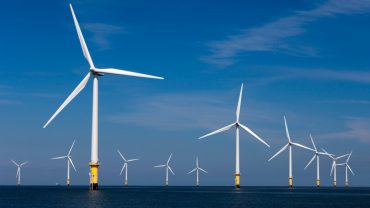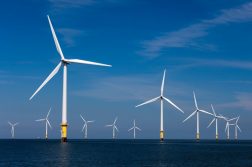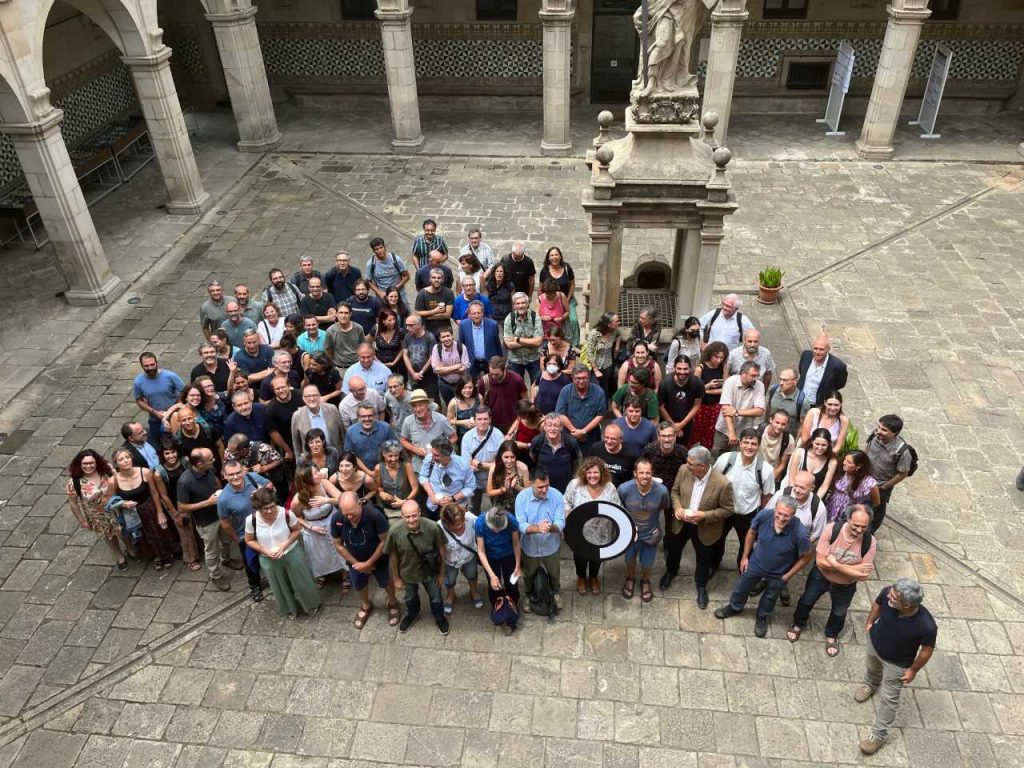The responsible deployment of renewable energies is a topical issue. The R+D CSIC magazine echoes this and delves into the BIOPAIS project, which has the participation of the Center for Advanced Studies of Blanes (CEAB-CSIC).
(below, we reproduce the article published on October 13 in R+D CSIC, signed by Mireia Ayats, CSIC Catalunya Communication)
The European Union aims to become climate neutral by 2050. To achieve this, it has been calculated that offshore wind energy must cover 30% of the electricity demand of member states, which means that the space must be multiplied by 15. current marine destined for the production of this type of energy.
In Spain, one of the points where a wind farm is planned to be installed is the area of Cape Creus and the Gulf of Roses, in the Empordà; but an article from the BIOPAIS Project, which evaluates the environmental impact of these power plants in the Mediterranean, recommends that they not be installed there. The project is coordinated by the Institute of Marine Sciences (ICM-CSIC) and the University of Girona (UdG), and has the participation of the Center for Advanced Studies of Blanes (CEAB-CSIC).
The Empordà is a space that is characterized by the wind, but also by its landscape, which attracts tourism; and for having great biodiversity. In fact, the Mediterranean is home to between 4 and 18% of the world’s marine species and this area is the one with the greatest diversity of turtles, mammals and seabirds. For this reason, it has eight protected areas recognized both nationally and internationally and two fishing bans for the recovery of species.
The Empordà power plant
To plan the Empordà wind farm, the power plants in the North Sea have been taken as an example; but according to Rafael Sardá, CEAB researcher and participant in the BIOPAIS project, “t. here is no point of comparison. On the one hand, the Mediterranean is home to greater biodiversity. On the other hand, the continental shelf of the North Sea is wider and shallower, which is why fixed wind turbines have been installed, relatively small and far from the coast”. In the Mediterranean, and particularly in the Cap de Creus area, on the other hand, the wind turbines would have to be installed closer to the coast, they would measure more than 250 meters and they would be floating, which means that they would not be anchored directly to the ground, but rather They would be held in place by large anchoring systems.
This would have several consequences, explained in a previous article on the same project. Within the sea, marine mammals and other animals moving through the area could collide or become entangled in the wiring; and the sound that the turbines make could have an impact on their behavior, since some of them are guided by sounds. Likewise, say Josep Lloret, Elisa Berdalet and Josep Maria Gili, ICM researchers, “the destruction of the seabed can leave fixed organisms buried, such as corals, sponges and mollusks, which would not survive.”
Outside of it, there would be a change in the landscape. As they are large wind turbines and are located relatively close to the coast, they would be seen from the coastal towns and this could have an impact on tourism. Furthermore, says Sardá, “it must be taken into account that a power plant not only implies having the wind turbines, but also industrializing the port and the adjacent territories to house substations, energy transmission lines and other infrastructure.”
Biodiversity in the fight against climate change
It should be noted that spaces with so much biodiversity contribute to the fight against climate change, since to offset the carbon footprint we can only reduce – and if possible avoid – the emission of greenhouse gases or expand the base of organisms that absorb carbon. With the Empordà wind farm, spaces that fulfill this function would be lost while at the United Nations Conferences on Biodiversity and Climate, the countries agreed that the solutions for the climate crisis cannot go against the protection of biodiversity.
Although there are no studies on the balance of these two factors in the particular case of Cap de Creus and the Gulf of Rosas, Lloret and Berdalet believe that when talking about renewable energy it should also be taken into account that, “to build, place, maintaining and even dismantling the turbines, fossil energy is used; and that the estimated life of these infrastructures is between 25 and 30 years.
Wind energy, better outside protected natural areas
The latest article from the BIOPAIS Project recommends that the development of offshore wind energy in the Mediterranean should not be done in protected natural spaces or even near them, since the only studies that conclude that this could benefit biodiversity are based on the Sea of the North and, therefore, would not be applicable to the Mediterranean. This would also be valid for pilot tests.
This project, which will continue for two more years, aims to contribute to better planning and facilitate decision-making so that, with scientific evidence as a basis, the energy transition can be compatible with the protection of biodiversity.
R+D CSIC is a publication of the Deputy Vice Presidency of Transfer of the CSIC to publicize the research and technological offer of its research centers.
Additional Information:
– Projecte Biopais
–Recull d’articles científics del projecte Biopais






